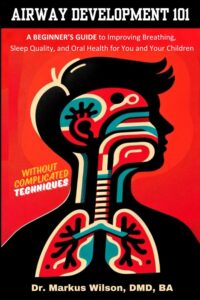
Your mouth, nose, and throat are the essential components of your upper airway. If any of them are not working properly, you might suffer from airway obstruction, which could affect your oral health, the quality of your sleep, and your systemic wellness. What are signs of upper airway obstruction, and what treatments might be able to help you start breathing better? This blog post explains.
What Does It Mean to Have an Obstructed Airway?
Airway obstruction does not always mean you cannot breathe. Rather, it more frequently means that you cannot breathe properly. Due to abnormalities in the shape or function of your oral structures, oxygen may not be able to flow easily. An obstructed airway can also interfere with nasal breathing, which is preferable to mouth breathing. Such issues may occur due to genetics or bad habits that affected the development of the airway, such as poor resting tongue position or prolonged pacifier use.
An obstructed airway can be especially noticeable at night; some people even experience complete pauses in breathing that equate to obstructive sleep apnea.
Signs and Symptoms of Airway Obstruction
Signs and symptoms of obstructed breathing often start in childhood. If the underlying issue is not addressed, problems can persist into adulthood. Here are some signs that you or your child might have an obstructed airway:
- Mouth breathing.
- Oral health issues related to mouth breathing, such as bad breath.
- Dental misalignment, including various types of malocclusions (bad bites).
- Lip tie or tongue tie.
- Loud, frequent snoring.
- An aversion to certain textures of food.
- A narrow palate or upper jaw.
- Forward resting tongue posture.
- A history of thumb-sucking or prolonged pacifier use.
Addressing Airway Obstruction
To address anatomical issues that are causing airway obstruction, you should attend an airway evaluation with a qualified dentist. They will ask about your symptoms and perform an examination to look for anatomical abnormalities that may be contributing to your problems. Then, they can recommend your next steps. Very often, non-surgical approaches to treatment are successful. Some potential options include:
- Myofunctional therapy. This is essentially physical therapy for the mouth, which promotes proper breathing, swallowing, and overall oral function.
- Orthodontic treatment. Braces or other forms of orthodontia can help to address dental misalignment, a narrow upper jaw, and other issues.
- Oral appliance therapy. An oral appliance moves the lower jaw forward during sleep, helping to keep the airway open.
Learn More About Airway Health

At Legacy Dental, Dr. Markus Wilson is proud to provide expert guidance on airway health. If you would like to consult with him and our team about how you or your child can start to breathe easier, we invite you to contact our Prince Albert Practice at 306-763-7841.
We also encourage you to check out Dr. Wilson’s book, which is entitled AIRWAY DEVELOPMENT 101: A BEGINNER’S GUIDE TO IMPROVING BREATHING, SLEEP QUALITY, AND ORAL HEALTH FOR YOU AND YOUR CHILDREN WITHOUT COMPLICATED TECHNIQUES. It provides simple and actionable advice that can help modern families to breathe better and feel better.
